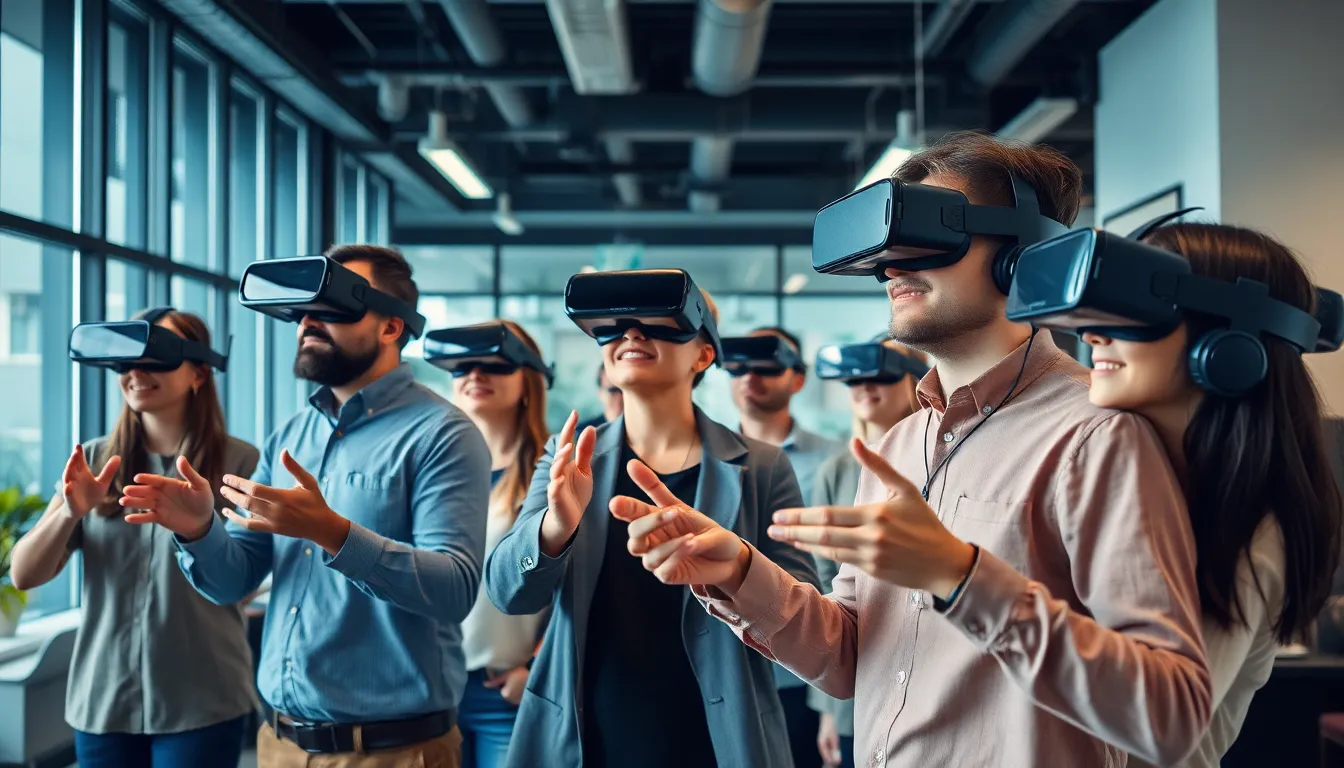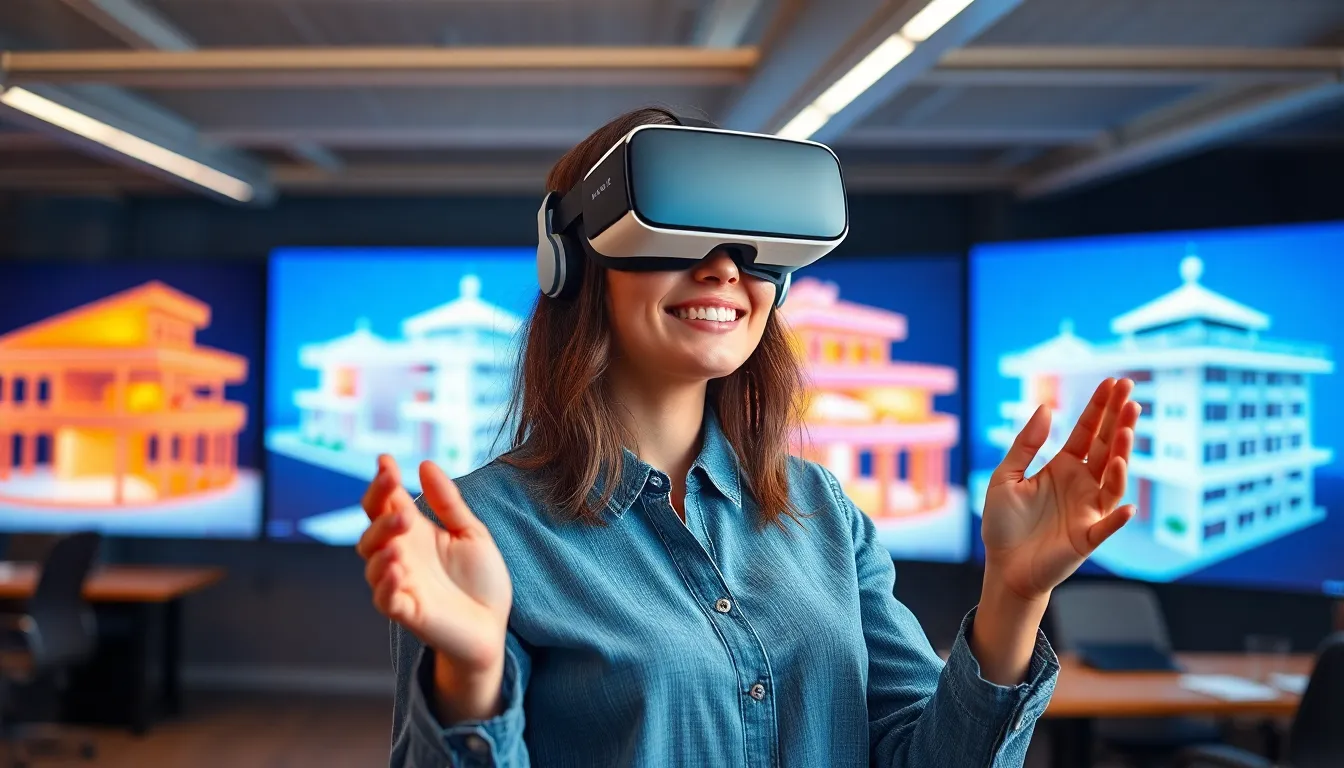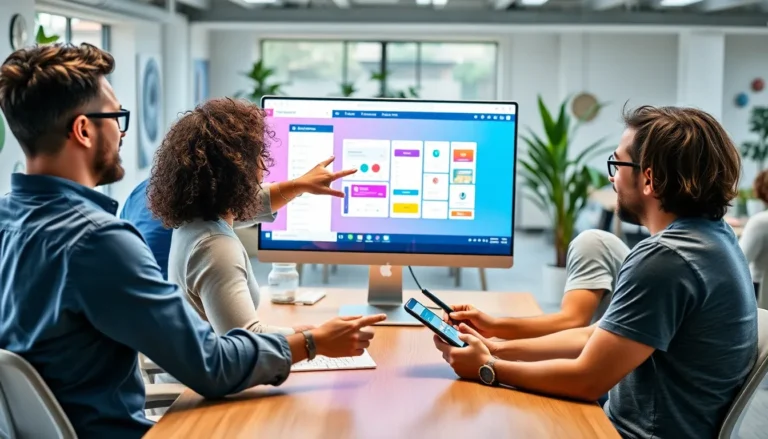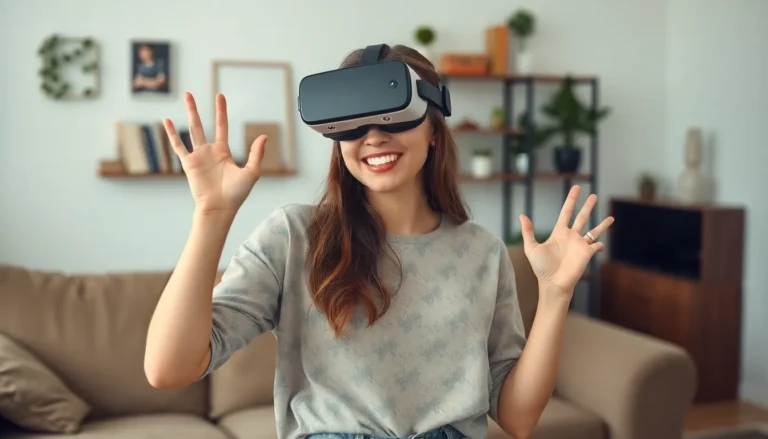In a world where reality sometimes feels a bit too… well, real, VR visualization tools are stepping in like a superhero in a spandex suit. These innovative tools let users dive headfirst into immersive environments, transforming mundane data into spectacular 3D experiences. Who wouldn’t want to walk through a virtual gallery of their latest design project or explore an architectural masterpiece without leaving their couch?
Table of Contents
ToggleOverview of VR Visualization Tools
VR visualization tools play a crucial role in transforming how users interact with data in immersive environments. These solutions provide a unique opportunity to explore complex information visually and intuitively.
Definition and Importance
VR visualization tools refer to software and hardware systems enabling users to visualize data in three dimensions. These tools enhance understanding and retention of complex concepts and facilitate decision-making. By immersing users in virtual environments, they bring data to life, making it relatable and engaging. Architects, engineers, and educators often utilize these tools to present their ideas effectively. Their importance is evident in various sectors, showcasing performance improvements and increased collaboration among teams.
Current Trends in VR Visualization
Current trends in VR visualization highlight significant advancements. Increased investments in VR technology lead to enhanced hardware capabilities and software features. Adoption rates in industries like healthcare and construction grow rapidly as more professionals recognize its advantages. Cloud-based VR solutions allow for greater accessibility, enabling users to share experiences across different locations. Additionally, the integration of artificial intelligence adds personalization to VR experiences, improving user interaction. Overall, these trends indicate a progressive shift toward mainstream acceptance of VR visualization tools.
Types of VR Visualization Tools

Various types of VR visualization tools enhance user engagement and understanding of complex data. They typically fall into two main categories: software solutions and hardware options.
Software Solutions
Numerous software programs specialize in VR visualization. Such tools include design applications tailored for architects, engineers, and educators. Popular examples consist of Autodesk Revit, which streamlines building information modeling, and Unity, ideal for creating interactive simulations. Each software offers unique features that facilitate collaboration and visualization of intricate designs. They provide users the ability to manipulate virtual objects and share experiences in real time. As industries continue to adopt these technologies, demand for software solutions grows.
Hardware Options
A variety of hardware options support VR visualization tools. Devices such as VR headsets are essential for immersive experiences. Models like Oculus Quest 2 and HTC Vive Pro provide high-resolution displays and motion tracking capabilities. Controllers, designed for intuitive navigation within virtual environments, enhance user interactions. Spatial audio systems also play a critical role in creating believable simulations. Together, these hardware elements deliver realism and engagement crucial for effective visualization in sectors such as architecture, engineering, and education.
Applications of VR Visualization Tools
VR visualization tools find applications across various industries, revolutionizing how professionals interact with data and designs in immersive environments.
Industries Leveraging VR
Architecture utilizes VR to create realistic building models, enhancing client presentations and design reviews. Engineering firms benefit from VR by simulating complex systems, which aids in identifying potential issues early in projects. Education institutions adopt these tools to provide interactive learning experiences, engaging students with content in a 3D space. Healthcare leverages VR for surgical training, allowing medical professionals to practice procedures without risk. Additionally, real estate uses VR for virtual property tours, giving potential buyers an immersive experience of listings.
Case Studies and Success Stories
In one example, a large architecture firm integrated VR into its design workflow, resulting in a 30% reduction in project revisions. Another notable case involves a construction company that employed VR simulations, leading to improved safety training outcomes and minimized on-site accidents by 20%. A prominent university adopted VR for its science programs, significantly increasing student retention rates due to enhanced engagement. Furthermore, a healthcare organization reported better surgical outcomes after utilizing VR training tools for its staff. These case studies demonstrate the tangible benefits VR visualization tools deliver across multiple sectors.
Benefits of Using VR Visualization Tools
VR visualization tools significantly enhance user engagement and understanding by providing immersive experiences. Users can interact with complex data in realistic environments, making it easier to grasp intricate concepts.
Enhanced User Experience
Immersive environments increase understanding and retention. Users experience designs as if they are walking through them, allowing for immediate feedback. Overall, this heightened interaction leads to deeper insights. Architects may assess spatial relationships effectively, while engineers can visualize systems more clearly. Ultimately, the sensory engagement offered by VR promotes a stronger emotional connection to the content.
Improved Collaboration
Collaboration benefits from VR by allowing teams to work together in virtual spaces, regardless of geographical locations. Professionals can discuss designs and make real-time changes during virtual meetings. Instantaneous feedback fosters enhanced communication and understanding among team members. Design revisions can occur on the fly, streamlining the decision-making process. So, companies realize increased efficiency as project stakeholders stay aligned throughout various stages of development.
Challenges and Limitations
VR visualization tools face several challenges that may impact their effectiveness and broader adoption. These challenges primarily involve technical constraints and barriers to adoption.
Technical Constraints
Hardware requirements can limit accessibility for some users. High-performance computers and VR headsets often carry significant costs, leading to limited use among smaller organizations. Latency issues may arise, disrupting the immersive experience if hardware can’t keep up with the demands of real-time rendering. Content creation also presents challenges, with complex software needing specialized skills to operate effectively. Developers must ensure full compatibility between software and hardware, requiring ongoing updates and maintenance.
Adoption Barriers
Organizations might hesitate to integrate VR due to perceived high entry costs. Training staff on new technologies takes time and resources, causing delays in implementation. Concerns about user experience can arise, as some may feel discomfort during extended VR sessions. Compatibility issues also emerge, especially when integrating existing systems with new VR tools. Resistance to change from employees accustomed to traditional methods may further hinder adoption.
The rise of VR visualization tools marks a pivotal shift in how industries approach data interaction and design. Their immersive capabilities not only enhance understanding but also foster collaboration among teams. As organizations continue to embrace these tools they unlock new possibilities for innovation and efficiency.
While challenges remain in terms of accessibility and content creation the benefits far outweigh the obstacles. With ongoing advancements and increasing adoption across various sectors VR visualization tools are set to redefine professional practices. The future looks promising as these technologies continue to evolve and integrate into everyday workflows.




